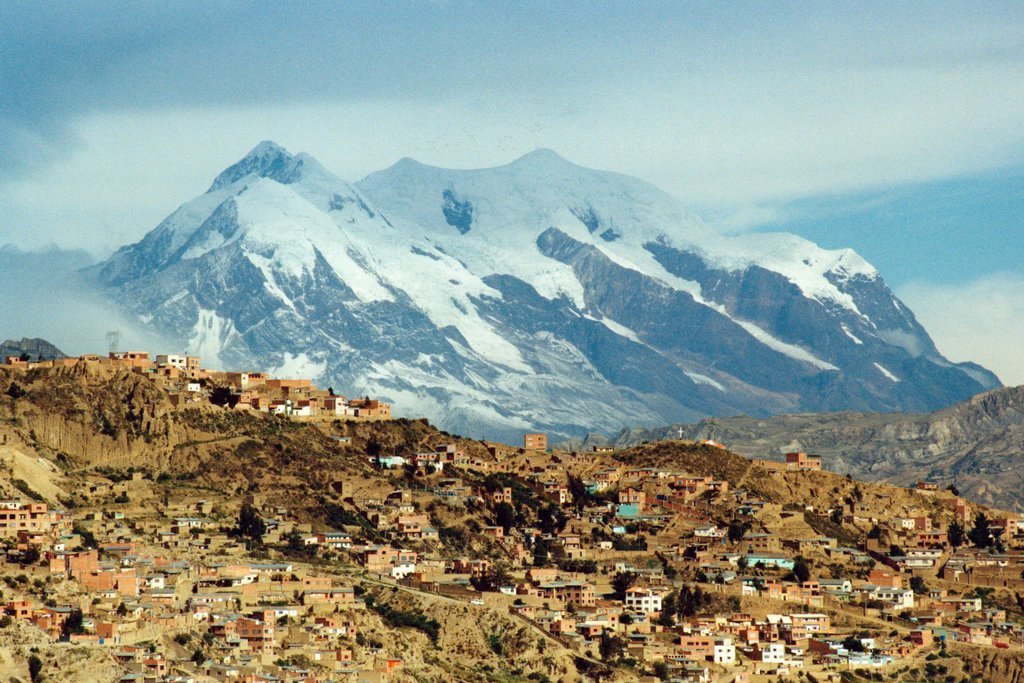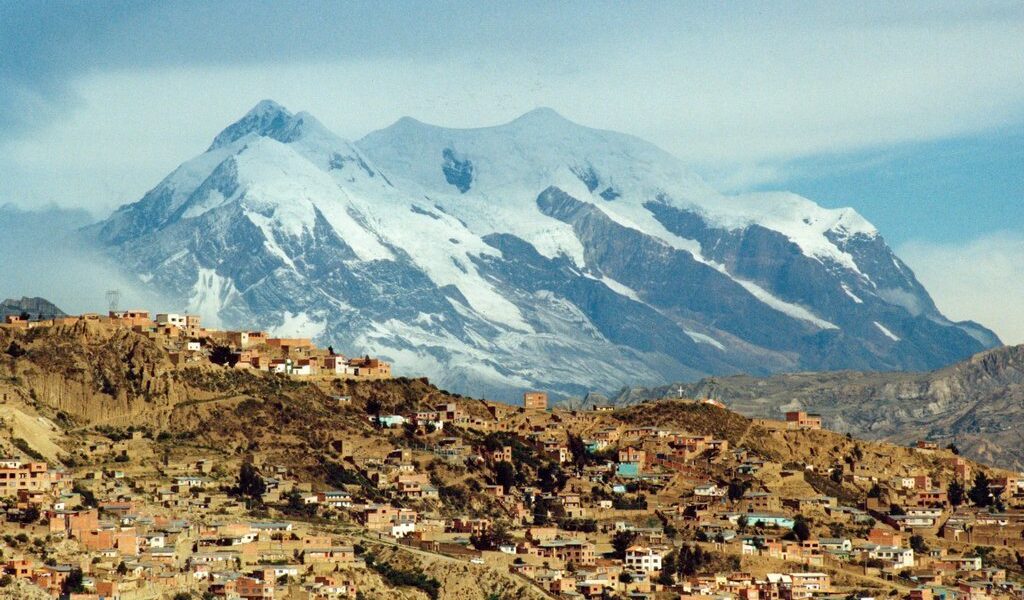
The rain comes down heavily in January across most of Bolivia, despite temperatures in some regions such as the rainforest being at their annual high. Yet, this is a great time to explore Bolivia’s big cities like La Paz, Sucre, and Santa Cruz, including a host of cultural attractions that visitors in better weather pass over. The southeastern savanna is the most agreeable region now. Though parts of the Andes and rainforest are inaccessible due to rain, swelling water levels make for excellent white water rafting.
Bolivia, a captivating jewel nestled in the heart of South America, presents a diverse tapestry of landscapes and climates. Like many of its neighboring countries on the continent, Bolivia is geographically segmented into distinct zones, each boasting its unique atmospheric characteristics. These regions include the majestic high-altitude **Andes** mountain range in the west, reminiscent of the Andean regions of Peru, the verdant and humid **rainforest** sprawling across the north, and the expansive **savanna** region dominating the south and east. This savanna is largely characterized by the Gran Chaco, a predominantly semi-arid landscape sparsely dotted with trees.
### Andes
The city of **La Paz**, a bustling metropolis perched high in the mountains, offers a representative glimpse into the climate of this region. January in La Paz is notably wet, experiencing the highest precipitation levels of any month, averaging around 4.7 inches or 12 centimeters. While the minimum temperatures remain relatively high compared to other months, hovering around 37°F or 3°C, the temperature highs reach only 54°F or 12°C, which is considerably lower than other times of the year. Despite the cooler temperatures and abundant rainfall, the region still enjoys a fair amount of sunshine, averaging about six hours per day. Venturing to other parts of the Andes, one will find that destinations like **Lake Titicaca** and the surreal **Salar de Uyuni** generally experience slightly warmer temperatures than La Paz during this period. The altitude and unique geographical features of these areas contribute to their distinct microclimates, making them appealing even during the wetter months.
### Rainforest
**Cobija**, situated in the northernmost reaches of Bolivia near the Brazilian border, provides a clear indication of the rainforest’s climate. January is usually the wettest month in Cobija, with an average rainfall of approximately 10.4 inches or 26 centimeters. However, the temperature remains consistently warm, with minimums averaging around 72°F or 22°C. Despite the frequent and heavy rainfall, the region still manages to receive an average of six hours of sunshine each day. The combination of heat and humidity creates a lush environment that is both challenging and rewarding to experience. Travelers should be prepared for the damp conditions and pack accordingly, embracing the unique tropical atmosphere of the Bolivian rainforest.
### Savanna
The city of **Santa Cruz** serves as a good example of the climate within the savanna region. Temperatures in Santa Cruz during January typically range from a comfortable 70°F or 21°C to a balmy 86°F or 30°C. Compared to the cooler temperatures in the Andes, the savanna region offers a significantly warmer climate during this time. Rainfall reaches its peak in January, with an average of 12 rainy days and a total precipitation of 7.9 inches or 20 centimeters. However, it’s important to remember that the savanna region is vast, and temperatures and rainfall can vary from place to place. Other areas within the region may experience slightly different climatic conditions, but the general trend remains consistent.
## Crowds & Costs
During January, tourist crowds in Bolivia tend to be relatively small. The increased rainfall deters many visitors, creating opportunities for travelers to find great deals on hotels and tours. The wet weather makes some parts of the country less accessible, like the often-flooded **Uyuni** salt flats and many areas within the rainforest. This decreased accessibility can discourage some travelers, leading to fewer crowds and more competitive pricing. Taking advantage of this slower period allows for a more intimate and budget-friendly exploration of the country.
## Where to Go
### Andes
Given the wet conditions during January, it’s advisable to focus on indoor activities and urban destinations offering a variety of options for inclement weather. The vibrant capital city of **La Paz**, known as the world’s highest capital, is an excellent choice for escaping the rain. Visitors can delve into the exciting foodie scene, propelled onto the global stage by Claus Meyer’s renowned high-end restaurant, Gustu. Alternatively, you can immerse yourself in the culinary traditions of Bolivia through a cooking class. Museum enthusiasts will appreciate the **Ethnography Museum** and the **Coca Museum**, which provides insights into Bolivia’s most significant crop.
**Sucre**, another captivating cosmopolitan destination in the Bolivian Andes, is home to the **Casa de la Libertad**, the historic site where Bolivia’s Declaration of Independence was signed. Additionally, Sucre boasts an impressive collection of stunning colonial buildings, making it a worthwhile destination for history buffs and architecture enthusiasts.
### Rainforest
Venturing into the rainforest during January can be challenging due to flooding and accessibility issues. It is generally recommended to postpone rainforest excursions until the months of April through October when wildlife is more visible and accessible. During the drier months, animals tend to be more active and less likely to seek shelter from the rain, making for a more rewarding wildlife viewing experience.
### Savanna
If a visit to the savanna is on your itinerary, be prepared for warm temperatures and frequent showers. Despite the rainfall, this region offers arguably the most pleasant climate in Bolivia during January. Consider heading to the relaxed town of **Tarija** and the nearby **Valle de la Concepción** wine-growing region. The surrounding hills provide excellent hiking opportunities, and the waterfalls at **Chorros de Jurina** are particularly spectacular in full flow during this time of year. **Santa Cruz**, the largest and most cosmopolitan city in Bolivia, is a vibrant cultural center that offers attractions year-round. Well-maintained parks provide tranquil spaces for relaxation, allowing visitors to observe local life and soak in the atmosphere.
## What to Do
### Andes
When visiting the Andes in January, it’s prudent to prioritize indoor activities or choose locations where shelter is easily accessible, given the chilly and damp conditions. This makes larger cities like **La Paz** or **Sucre** appealing, as they offer a selection of restaurants, markets brimming with intriguing produce and handicrafts, and an array of museums and galleries. Outside of the urban centers, a thrilling option is to go white water rafting, kayaking, or tubing on the **Río Coroico** near **Coroico**, where an abundance of exciting rapids awaits.
### Rainforest
January is generally not the best time to visit the rainforest due to the heavy rains and potential flooding. However, if you do decide to go, a leisurely boat trip along an Amazonian river can be a relaxing experience. This is feasible on the **Río Beni** (starting from Rurrenabaque, contingent on road accessibility due to flooding) or, even better, from **Trinidad**, which offers better road connections to other parts of Bolivia.
### Savanna
Consider visiting the wineries in the **Valle de Concepción** near Tarija for a delightful experience. Alternatively, January might be a good opportunity to immerse yourself in the cosmopolitan atmosphere of **Santa Cruz**, Bolivia’s largest city. Relax in one of the city’s beautiful parks, observe local life, or explore a museum such as the **Museo Etnofolklórico Municipal**, showcasing artifacts from eastern Bolivia’s indigenous peoples.
For nature enthusiasts, a trip to the biodiverse **Parque Nacional Amboró**, one of Bolivia’s greatest national parks, could be rewarding. Bolivia is also home to numerous thermal springs, with **Aguas Calientes** in the **Chiquitania** region being one of South America’s largest.
## Events in January
**Anchcalla**, **La Paz**. This celebration takes place during the first week of January in La Paz and features colorful parades and dances, marking the beginning of the potato crop’s bloom, a significant staple in Bolivia. Festivities also occur in Oruro and other locations.
**Dia de Reyes (Three Kings’ Day)**, **nationwide**. Celebrated on January 6, this day mirrors celebrations in many Catholic countries. Children receive treats, and traditional folkloric dances take place across numerous locations.
**Fiesta de Alasitas**, **La Paz**. Known as Bolivia’s Festival of Miniatures, vendors sell miniature versions of almost everything. Customers purchase these miniatures with the hope that their small dreams will manifest into life-size realities. The festival in La Paz extends for several days in January, with similar celebrations occurring in Cochabamba and other cities later in the month.
B-187

